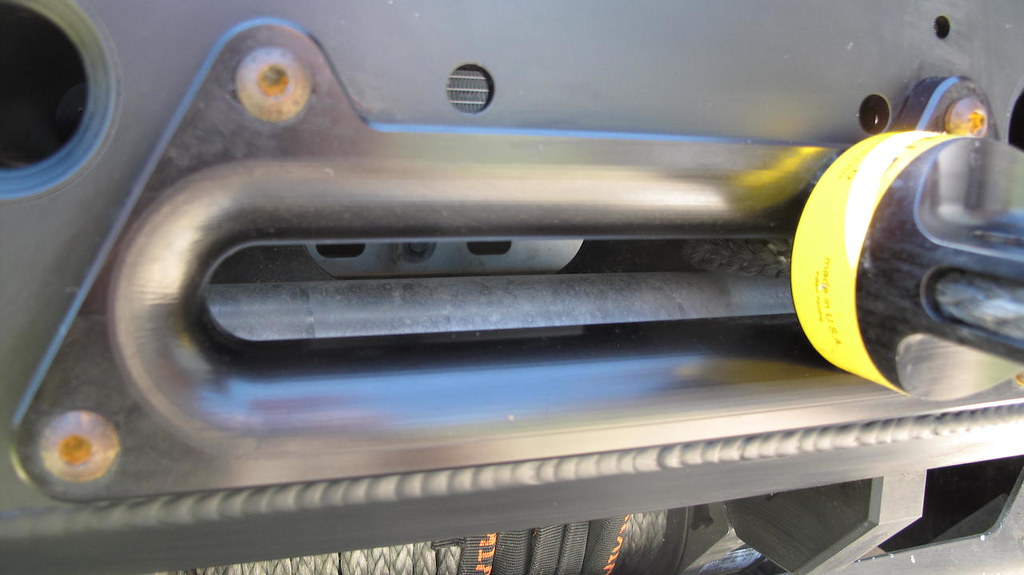So much wrong here
I copied this photo from the excellent American Adventurist site, where it was posted as an example of how not to rig a winch.
Indeed. Yet this is not some low-budget bodge job on a winch installation. There are quality products represented here—a Warn winch and synthetic line. But several things set off alarms.
Let's begin with the least-egregious aspect: that winch hook stuffed into the recovery loop. There is nothing wrong with the standard open winch hook, although aside from being quicker to deploy it suffers when compared to a closed thimble, which is positively connected to the winch point with a shackle and cannot come loose inadvertently. What worries me here is that the spring-loaded safety tab could easily be stressed and bent the way it is forced open, possibly interfering with its effectiveness or even damaging it.
Next there is the hawse fairlead. As with the hook, there is nothing wrong with a hawse fairlead, although it is a myth that you should use only a hawse fairlead when running synthetic winch line. A roller fairlead is fine for synthetic line and is in fact easier on the line. The problem with this particular hawse fairlead is the extremely shallow chamfer on the opening, which will severely stress the line when used on an off-angle pull. The chamfer on such a fairlead should ideally have a radius six times the radius of the line itself. Here is a much better hawse fairlead:
The real disaster here, however, is the line, which is spooled over the top of the drum rather than under the bottom. Besides causing the remote to work backwards—"in" will spool out and vice versa—and the fact that the line has a much more acute angle to travel through the fairlead, there are two genuinely dangerous results. First, pulling in line over the top of the drum on a winch mounted this way, with the feet down, moves the center of force farther away from the mount, increasing the stress on it. Second, the brake will not operate correctly if, for example, the operator needs to lower a vehicle down a steep incline, although Warn tells me the winch will still not let the vehicle free-fall.
A vehicle-mounted winch is not a tool to be installed casually or carelessly. I worry that the person to whom this one belongs will have taken the same approach to learning how to actually use it. Not a good scenario.


